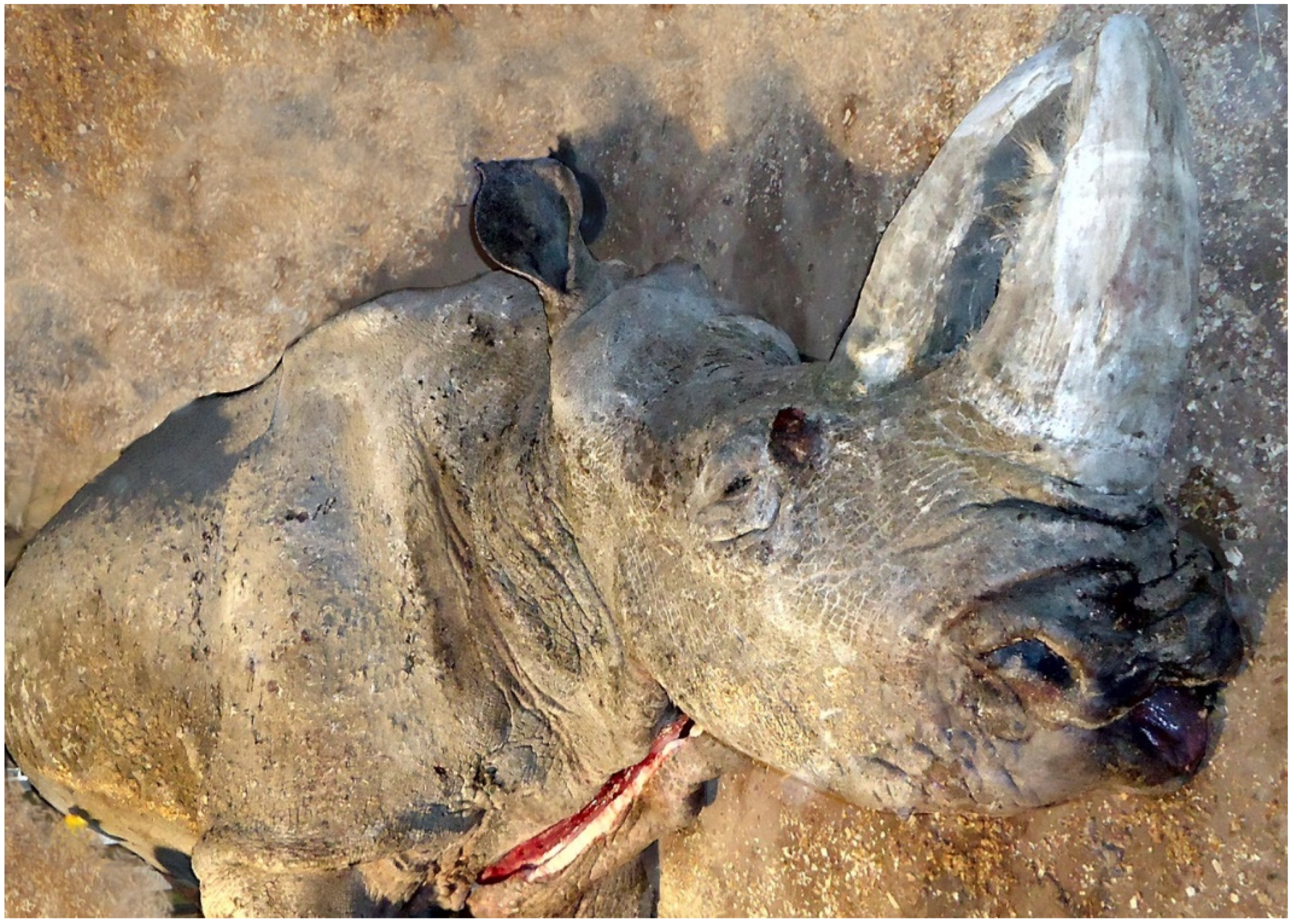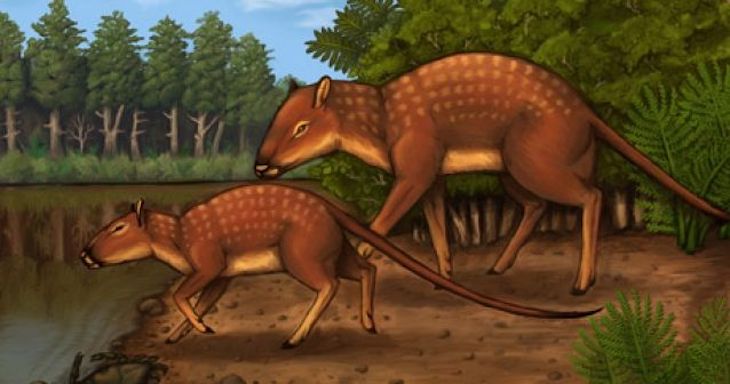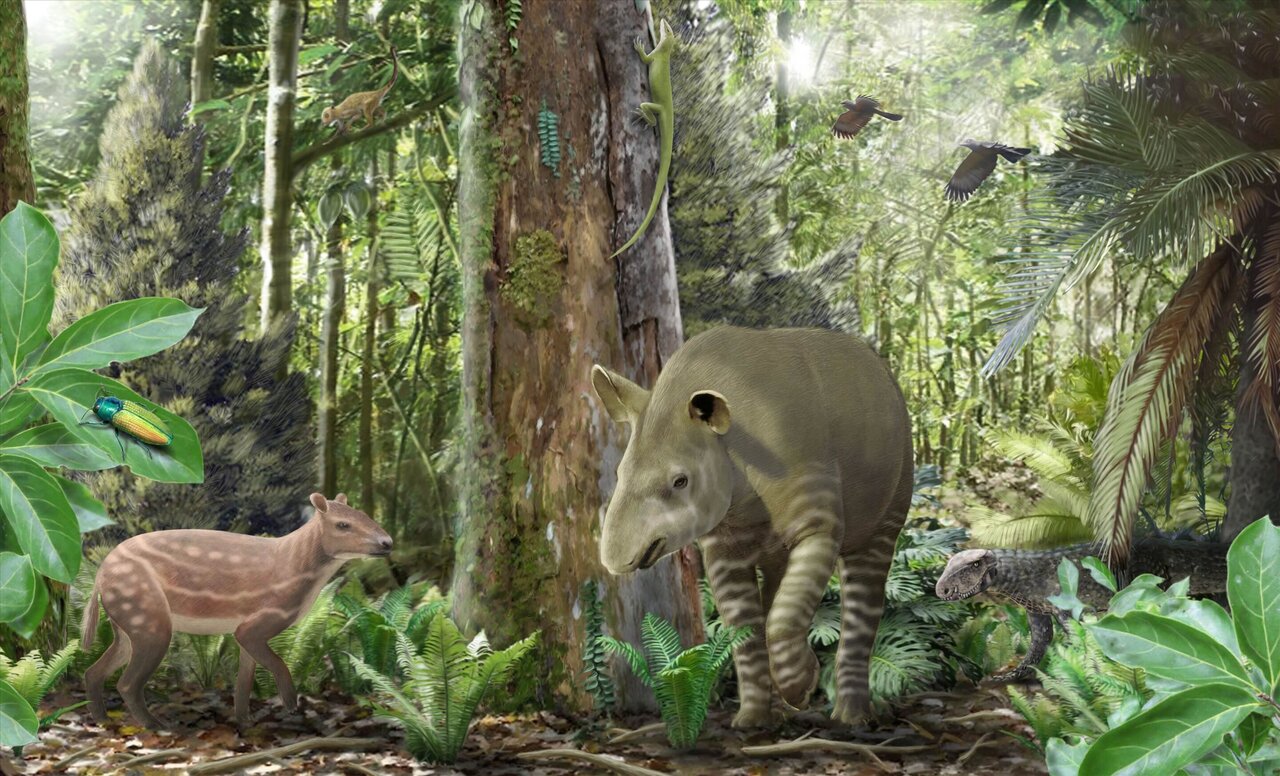An international group of paleontologists has discovered a horse-like animal that lived in what is now India during Eocene epoch, about 55 million years ago. The discovery fills in a major gap in understanding of the evolution of Perissodactyla, a group of animals that includes horses and rhinos.

Cambaytherium thewissi. Image credit: Elaine Kasmer.
Perissodactyla (perissodactyls) is a small order of hoofed mammals, containing three extant families: Equidae (horses), Tapiridae (tapirs), and Rhinocerotidae (rhinoceroses).
Also known as odd-toed ungulates, perissodactyls have an uneven number of toes on their hind feet and a distinctive digestive system.
“Though paleontologists had found remains of Perissodactyla from as far back as the beginnings of the Eocene epoch, about 56 million years ago, their earlier evolution remained a mystery,” said Prof Kenneth Rose of the Johns Hopkins University School of Medicine, who is the first author of a paper published in the journal Nature Communications.

In 1990, Dr David Krause and Dr Mary Maas of Stony Brook University suggested that several groups of mammals that appear at the beginning of the Eocene, including perissodactyls, even-toed ungulates and primates, might have evolved in India while it was isolated.
The fossilized remains of an early perissodactyl animal uncovered from the Cambay Shale Formation in Gujarat, India, are the first concrete evidence to support that hypothesis.
The animal, named Cambaytherium thewissi, was the size of a pig and likely weighed 25-30 kg.

Prof Rose and his colleagues dated the fossils to about 54.5 million years old, making them slightly younger than the oldest known perissodactyls.
“It provides a window into what a common ancestor of all Perissodactyla would have looked like,” Prof Rose said.
“Many of Cambaytherium thewissi‘s features, like the teeth, the number of sacral vertebrae, and the bones of the hands and feet, are intermediate between Perissodactyla and more primitive animals. This is the closest thing we’ve found to a common ancestor of the Perissodactyla order.”

Cambaytherium thewissi and other finds from the Cambay Shale Formation also provide tantalizing clues about India’s separation from Madagascar, lonely migration, and eventual collision with the continent of Asia as the Earth’s plates shifted.
“Around Cambaytherium‘s time, we think India was an island, but it also had primates and a rodent similar to those living in Europe at the time,” Prof Rose said.

“One possible explanation is that India passed close by the Arabian Peninsula or the Horn of Africa, and there was a land bridge that allowed the animals to migrate.”
“But Cambaytherium thewissi is unique and suggests that India was indeed isolated for a while.”
Source: sci.news








